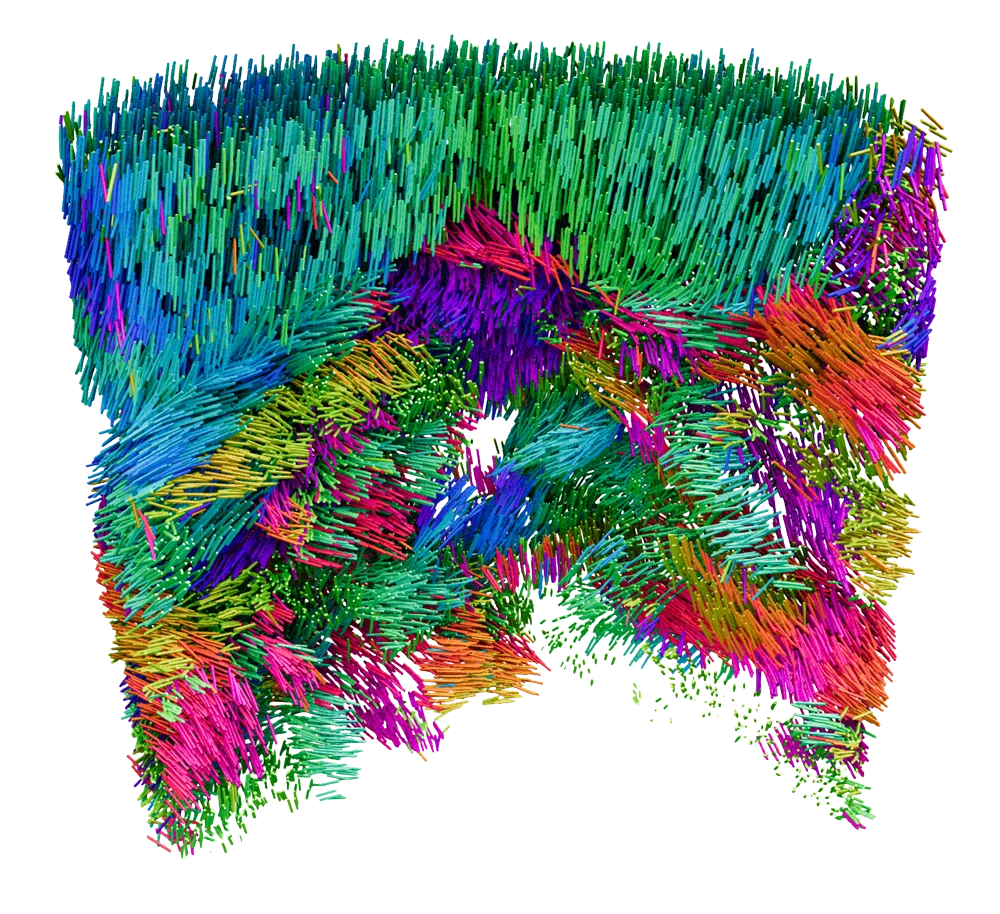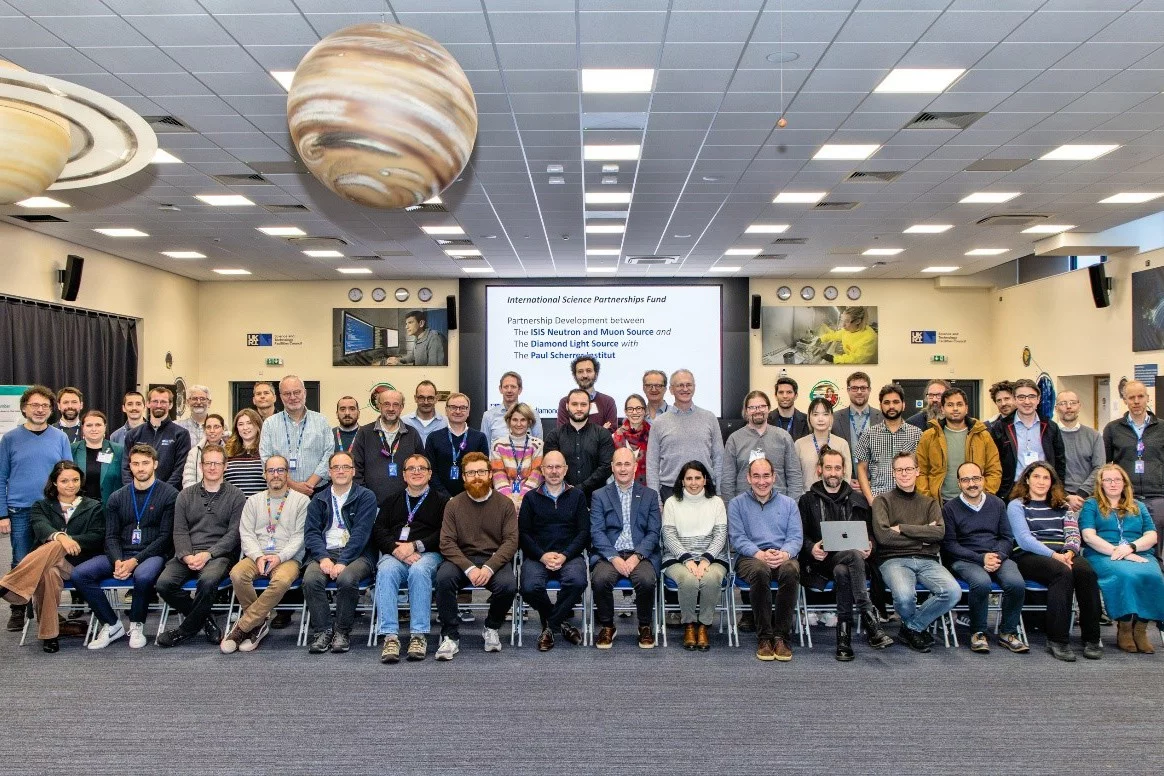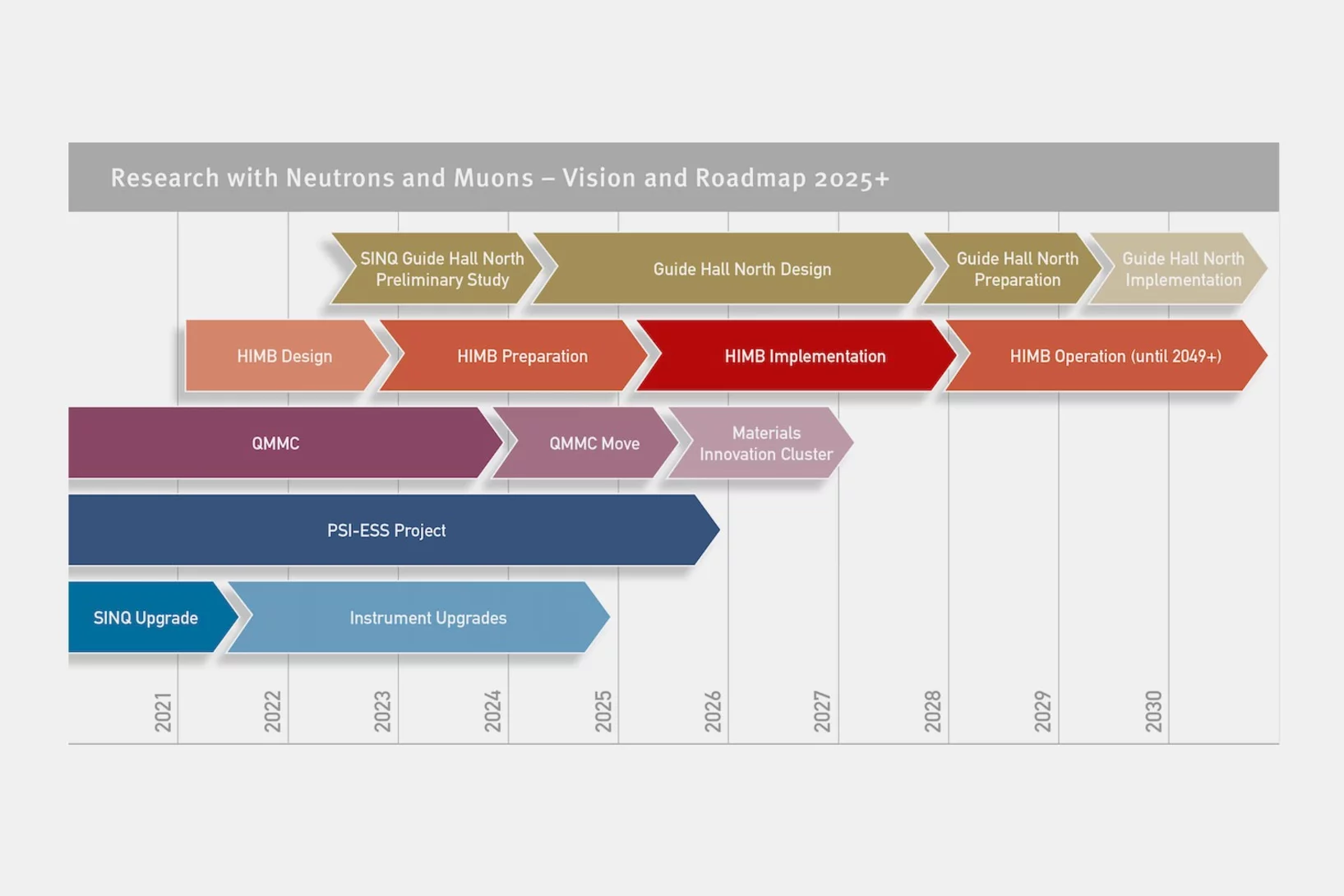The PSI Center for Neutron and Muon Sciences uses neutrons and muons to explore and understand matter and materials.
Lab News & Scientific Highlights
In Search of New Physics: New Result from the MEG II Collaboration
On the occasion of a special seminar at the Paul Scherrer Institut (PSI) in Switzerland on 23 April 2024 the scientific collaboration of the MEG II experiment presented an important new result in the search for the decay of a positive muon into a positron and a photon. The findings, based on data collected in 2021 and 2022, are detailed in a paper published on arXiv and submitted to the journal Physical Review Letters.
New Website of the Swiss Neutron Science Society
Please check out the new online presence of the Swiss Neutron Science Society (SNSS)
Anomalous Hall Effect due to Magnetic Fluctuations in a Ferromagnetic Weyl Semimetal
The anomalous Hall effect (AHE) has emerged as a key indicator of time-reversal symmetry breaking (TRSB) and topological features in electronic band structures. Absent of a magnetic field, the AHE requires spontaneous TRSB but has proven hard to probe due to averaging over domains. The anomalous component of the Hall effect is thus frequently derived from extrapolating the magnetic field dependence of the Hall response. We show ....
Two Characteristic Contributions to the Superconducting State of 2H-NbSe2
Multiband superconductivity arises when multiple electronic bands contribute to the formation of the superconducting state, allowing distinct pairing interactions and gap structures. Here, we present field- and temperature-dependent data ...
Observation of the spiral spin liquid in a triangular-lattice material
The spiral spin liquid (SSL) is a highly degenerate state characterized by a continuous contour or surface in reciprocal space spanned by a spiral propagation vector. Although the SSL state has been predicted in a number of various theoretical models, very few materials are so far experimentally identified to host such a state. Via combined single-crystal wide-angle and small-angle neutron scattering, we report observation ...
Doping dependence of the dipolar correlation length scale in metallic SrTiO3
Superconducting domes, ubiquitous across a variety of quantum materials, are often understood as a window in which pairing is favored, opened by the fluctuations of competing orders. Yet, the understanding of how such a window closes is missing. Here, we show that inelastic neutron scattering ...
Our Facilities
Recent CNM publications
-
A. A, Kalal S, Saravanan K, Ojha S, Stahn J, Gupta M
Study of structural and magnetic properties of Pd-doped Co4N thin films
Journal of Superconductivity and Novel Magnetism. 2025; 38(1): 17 (7 pp.). https://doi.org/10.1007/s10948-024-06880-w
DORA PSI -
Abel C, Ayres NJ, Ban G, Bison G, Bodek K, Bondar V, et al.
Generating a highly uniform magnetic field inside the magnetically shielded room of the n2EDM experiment
European Physical Journal C: Particles and Fields. 2025; 85(2): 202 (19 pp.). https://doi.org/10.1140/epjc/s10052-025-13902-x
DORA PSI -
Adachi T, Ogawa T, Komiyama Y, Sumura T, Saito-Tsuboi Y, Takeuchi T, et al.
Spontaneous magnetic field and disorder effects in BaPtAs1-xSbx with a honeycomb network
Physical Review B. 2025; 111(10): L100508 (6 pp.). https://doi.org/10.1103/PhysRevB.111.L100508
DORA PSI












